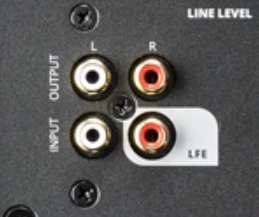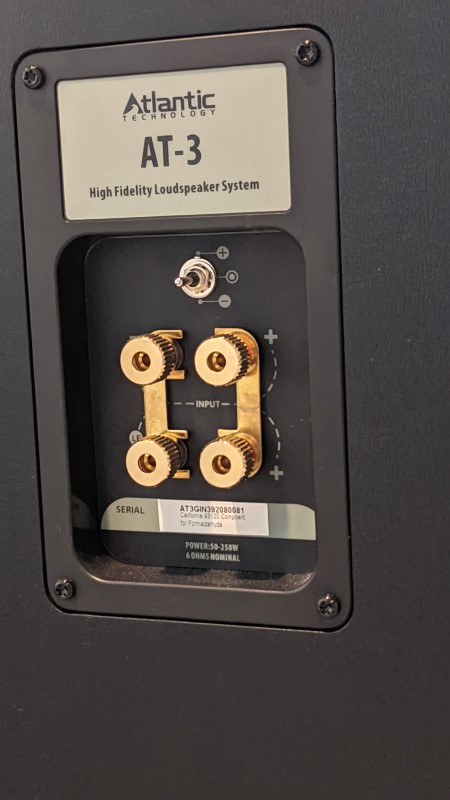Single or Double Subwoofer Cable – Which is Better?
Everyone starts somewhere. This is often said after someone announces that they know very little about home theater but they have a question. Too often, the answers given contain so many assumptions and jargon that the questioner couldn’t possibly understand it without at least a couple of Internet searches. That’s why we try to be plain around here with our explanations. We also don’t blame people for not knowing or understanding something. So when people ask about single or double subwoofer cables, we are happy to answer. And, honestly, I had to look up what a double subwoofer cable was because I haven’t shopped for a subwoofer cable in over a decade.
The Differences Between a Single and Double Subwoofer Cable
Any subwoofer cable is essentially an analogue audio cable. The same cables that we use for our CD players years ago. They are just longer and better shielded. A single subwoofer cable has a single male connector at each end. The double subwoofer cable has a single male connector at one end and two at the other. The confusion comes in because the cables with two males at one end are often marketed as subwoofer cables. I had to look these up because I’d never seen them before. Meaning they are a fairly recent phenomenon.
The Confusion is Understandable
If you look at the back of a subwoofer, you’ll often see something like this:

Two inputs! Red and white! In the case of the SVS subwoofer above, one is labeled “LFE,” but there are still two of them. But you’ll only see a single subwoofer output for each subwoofer on the back of your AV receiver. A cable with one male connector at one end (for the receiver) and two at the other (for both inputs on the subwoofer), makes perfect sense. Is this how we should be connecting our subwoofers?
The Correct Cable
When deciding between a single or double subwoofer cable, there are two considerations: performance and cost. You want to connect in the way that gives you the best performance at the least cost. In this case, it is the single subwoofer cable. The reason? The double gives you no benefit.
The dirty little secret about those two inputs on the back of most subwoofers? They are actually the same input! Inside the wires connect together to feed a single signal into the amplifier. In fact, we’ve had subwoofers that had both of the inputs break on the back of the amplifier. The solution? Plug your subwoofer cable into one of the outputs! That’s right! In many subwoofers, the inputs and outputs are all connected! You can literally plug your cable into any of them and your subwoofer will work just fine!
Author’s Note: This is not necessarily true of all subwoofers. Make sure you contact your manufacturer before you start trying out the other ports on the back of your subwoofer.
When deciding between a single and double subwoofer cable, the only difference is cost. And the double subwoofer cables are always more expensive. Since there are no performance benefits, it is correct to always choose the single subwoofer cable.
Then Why Do Double Subwoofer Cables Exist
I’d argue that they don’t. There was a brief time where a couple of AV receivers hit the market with very low subwoofer pre-out voltage. Some subwoofer amplifiers had a hard time picking them up. One solution was to up the trim at the receiver, the other was to add a Y-splitter to the end of the subwoofer cable and plug it in to both inputs. This (sometimes) worked as it slightly increased the voltage the subwoofer amplifier saw. But that hasn’t been a problem in years so…
What is happening with the double subwoofer cable is that it is taking a mono output from your receiver and splitting it into two mono outputs. But the ends of these cables require your gear to be very close to each other. We often suggest adding a Y-splitter to the output of your receiver but this cable doesn’t help. The split is at the wrong end!

The real use we see for this type of cable in home theater is to bi-amp your speakers. If you were to connect one of these cables to your pre-out for your front right speaker (for example), you could split it at the amplifier. You could use the dual end to connect to two different amplifier channels to power the same speaker (see image above).
But this is a very niche thing to do. If you are going to make a cable that can split a single mono signal into two mono outputs, you should probably find a way to sell more of them. Marketing this cable as a subwoofer cable seems to be their way of doing that. But don’t waste your money. You don’t need the double subwoofer cable when the single works just fine.
What About That LFE Input?
Lastly, I should mention that you should connect your single-ended subwoofer cable to the dedicated LFE input. While it is likely any of the inputs will work fine, this is the way the manufacturer intended. Sometimes you’ll see a dedicated LFE input or (more commonly) one of the Left or Right line-level inputs will be labeled LFE (either on the amp on in the connection instructions). However many inputs and outputs you find on the back of your subwoofer, the LFE is the correct input to use.



Excellent article. I have wondered if double subwoofer cables were necessary or not for a very long time. Thanks for clearing that up for everyone.